After its defeat at the battle of Ctesiphon, in November 1915, the British-Indian 6th Division, retreated southwards, towards Kut al-Amara. During the retreat the usual order of battle was reversed and the medical staff, like Sisir Sarbadhikari, found themselves in the thick of the action.
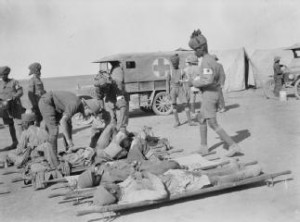
A rearguard action is exceptionally difficult… On the one hand you have to engage the enemy and at the same time you have to keep moving back, and in such a way as to minimize the loss of men and weaponry…. Ambulance staff are at great risk in a rearguard action. Normally, ambulance staff stay with or to the rear of combatant units. In a rearguard action the order is reversed. The wounded would be left behind while the regiment continued to retreat (59) and either the stretcher bearers or we ourselves would have to move them back. In other words, we were working between two fires… §(60)
Many of the wounded were evacuated on paddle-steamers: Sisir and the other volunteers of the Bengal Ambulance Corps were kept busy, carrying stretchers on to the vessels.
A subedar of the 104th Rifles was very fat and as we were lifting him into the steamer, someone said – ‘Baap-re-baap, how heavy!’
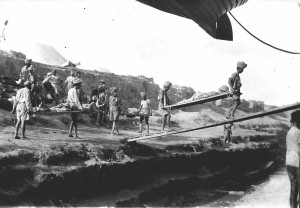
Even though he had spoken softly the Subedar sahib heard him and said, in a very sober voice – ‘What do you mean heavy? Just three maunds [about 240 lbs; 108 kg].’ We all laughed. Despite his wounds, he hadn’t lost his sense of humour. (47)
On the 24th, the BAC volunteers were loading stretchers on a steamer when the serang called out to them; he was a warrant officer from Chittagong and they had met him before. He said:
‘From your faces it seems you haven’t eaten in days; come aboard and eat some dal and rice.’ We were charmed by his graciousness and couldn’t say no. He couldn’t give us much and it looked as if what he gave us was from his own portion, but that act of generosity was unforgettable. He was Muslim, we were Hindus, but we shared the same language – Bangla, that was why he wanted to help us.
The Turkish forces were in constant pursuit of the retreating 6th Division.
At dawn on November 1st we saw a dream-like scene. A short distance away a huge Turkish encampment had arisen, with innumerable tents. It had come up overnight, like Aladdin’s city. We didn’t need binoculars to see them moving around…. (57)
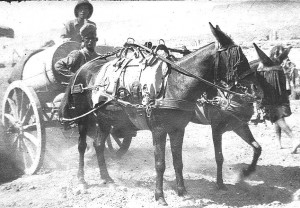
But in the midst of all this:
Our regimental pet was a sheep. Sailen [a BAC volunteer] had bought it in Amara – it was very little then, and we took pity on it. This sheep stayed with us all along. At the battle of Ctesiphon it sat in a tent with Prabodh [a BAC volunteer] … (because it was with us at Ctesiphon we called it Tessie). It had one fault and that was that if you didn’t pull it along with a rope it would come to a standstill. When bullets began to rain down on us we decided that we would untie the rope and let Tessie run for her life. But she wouldn’t run; she bleated and stared sadly at our faces. Then Prabodh said let’s take her along, whatever is in its future will happen.
Tessie came all the way to Kut with us. During the siege of Kut, when there was nothing to eat but horsemeat, the local Arabs offered us one hundred rupees for Tessie – they would have sold the meat for thirty or forty rupees a seer. (We had bought Tessie for 1 rupee and 5 siccas). Needless to say we didn’t accept the Arabs’ offer. At the end, when the Turks were almost in Kut we gave her to the officer’s mess. (57-8)
…
A Muslim sepoy of the 66th Punjabis had put his boots over his shoulder, probably because his feet were badly blistered, and was limping along, saying to himself ‘Ya Allah, on to Baghdad?’ Meaning by this, you thought you’d grab Baghdad, now chew on this. (61)¶
…
On the night of Dec 1.
Our feet were in a terrible state. They’d get a little rest during halts, but then they would freeze in the cold. It was December. In that region, in the open, the temperature would drop below freezing after midnight. We would sit for a while, then lie down and then get up and do double mark time. Or else our blood would have stopped moving in our veins. (61)
…
At dawn we started marching again. On the 2nd after marching through the day, General Townshend’s hungry and exhausted troops entered Kut al-Amara.

On the way many soldiers had been parted from their regiments and were marching alone. Not all of those who’d been separated made it to Kut; many probably lost their lives to Arabs, on the way.
Some had bandaged heads, some had their arms in slings, and many were limping.
When the victorious 6th division was advancing triumphantly then too there had been many bandaged heads and many arms in slings; at that time too there were many who were limping – but those things didn’t hurt as much then as they did now. These things weighed on our minds much more during the retreat. When an army is winning its morale is high.
…
Given the circumstances it was normal for our spirits to fall a little. But it was also true that our morale had not dropped to rock bottom. Like the sepoys, we had great faith in the British lion and we believed that victory would come in the end. We thought this was but a temporary setback, that the British would do everything possible to redeem their prestige.
The siege of Kut al-Amara began on December 7, with some 10,000 British and Indian troops being encircled by an Ottoman force that initially consisted of about 11,000 men (it was augmented later).
Along with the rest of the Bengal Ambulance Corps, Sisir was billeted inside a date orchard.
This was a favourite target of the Turks – bullets whistled by without interruption. In this orchard some tents were put up to house the hospital… On the 6th the orchard took so much fire that the hospital was moved to the bazaar. But before that some patients were killed by shells. One shell, instead of bursting above, hit a sepoy who was lying in bed, in one of the tents; it took off half his face before burying itself. The man rose to his feet as he was dying and then fell to the ground. His eyes, nose and mouth were all gone, there were only holes in his face, spouting blood. The sight was so ghastly that it created terror amongst the others in the tent. (65-6)
The Turks had a well-choreographed daily routine. Through the whole day they would bombard us; in the evening there would be rifle fire, an incessant whining of bullets. Not that there wasn’t any machine-gunning rifle-volleys during the day. One morning I was sitting beside a young fellow called Anthony, of the I.G.H., drinking tea, when a bullet hit Anthony in the forehead. He died right there and his body fell on me.
Another day a sepoy of the 7th Rajputs was sitting and chatting with us, when eight bullets hit him in the shoulder, just two or three inches apart. Those were the kinds of wounds a machine gun could inflict. (67)
….
January (1916) went by in hope and despair. It was very cold. We had lost most of our things at Ctesiphon, blankets included. In Kut we were given blankets – one to lie on and one for cover – they didn’t keep the cold out. It was raining heavily and the roads and lanes were filled with mud and water. (73)

February 1916.
With the start of the month all kinds of rumours began to circulate. Some said that a relieving force would arrive in the second week of this month, some said on the 25th… At one point it was said that the 6th Division would fight its way out of Kut and join up with the Relieving Force. But this plan had to be abandoned. There were some forty thousand Turkish soldiers in the trenches that surrounded us; not only were we outnumbered, but they were in trenches whereas we would be in the open. (75)
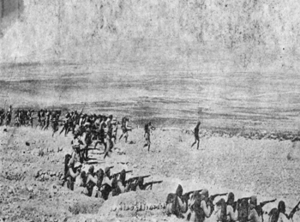
8th … News – the 13th British Division was coming to relieve us, from Egypt. This raised everyone’s hopes. There were two Indian divisions in the Relieving Force; now there would be a British Division as well. Our deliverance was certain.
9th. Today our ration of firewood was suspended – and why just firewood, much else too – and instead of that we were issued a cigarette-tin of crude oil, for eighteen of us. (75)
22nd. From the morning onwards there was a great uproar. Everyone was told to be ready. The Relieving Force might arrive at any moment; we would have to meet up with them and bring them into Kut. Everybody was very hopeful. (78)
23rd. No sign of the Relieving Force. All our hopes dashed.
29th. We hear that the Russians have taken Kermanshah. A plane dropped our post.
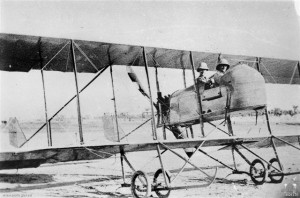
The Times of India of January 13 says that an approver in the Lahore Conspiracy case has testified that many guns had been sent there from Germany.
February went by. Food was short, and on top of that, because of the shortage of clothing, we had to wear just one set of clothes. We couldn’t change; nor could we bathe. Everybody was covered with lice. They would swarm all over us, under our clothes. The torment was indescribable. For lack of meat or fresh vegetables, scurvy broke out. (78)
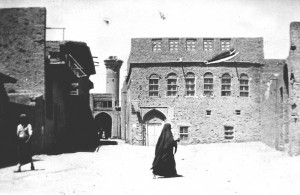
A bombardment started on the morning of March 1. Enemy airplanes dropped bombs several times. We had no planes in Kut, and even if we had I doubt they’d have been able to take off; with so many enemy soldiers close by, they’d have been shot down before they could get into the air… At about two in the afternoon, I had just come off duty from the hospital and was standing in front of my billet when a plane circled above and dropped a bomb. I was standing right below, and the plane had came very close. It slowed down a bit, and then let go the bomb – we stood there as if hypnotized. I could hear the whistle of the bomb, and I could see it coming towards us, like an arrow: at first it was like a dot, then a football; and when it was right above me it was like a kolshi.[i] There were a couple of people in the billet; it seemed to me that all of us who were there would be finished in a moment. But that didn’t happen; if it had then this account would not have been written, nor would you have to put up with reading it. The bomb fell but didn’t go off. There was the sound of something heavy hitting the earth. Only then did I call out to those who were sitting inside the billet. (79-80)
It was only a few days since we had returned to the date orchard. There was a Gurkha encampment near us. We were walking around when a plane appeared and dropped a bomb. A Gurkha was standing outside his tent, smoking, and the bomb fell near him. For a while there was only smoke and dust. When it cleared we saw only chunks of flesh and bone; the earth around there had turned into blood-soaked mud.
I remember the scene to this day. (80)
¶ Sarbadhikari took the title of his book from this episode.
[i] Kolshi – ghara; earthen water pot

Fascinating. Currently blogging about Australians and New Zealand prisoners taken at Gallipoli and in Palestine – some of whom worked with survivors of the siege/march on the Taurus Railway.
Do you know the fate of any Indian PoWs?
I understand some joined Amba Prasad Sufi – shades of Singapore!
Hi there. I am writing a thesis on the Indian Army experience in WW1. I was wondering where you read ‘On to Baghdad’? I can’t find it anywhere!
‘On to Baghdad’ is a Bengali memoir (‘Abhi Le Baghdad’). It was self published and is very hard to find. There is a copy in the National Library in Kolkata. Please look at my earlier posts – it is explained there.
A
My grandfather was there. He was with the 6th division under Townsend. He witnessed the surrender. He never told my father (his son) what happened to him after he was captured or how he got from Mesopotamia to the North West Frontier of India. My father assumes he was one of the lucky ones released to the American Consul.
If you have any information regarding survivors who were sent to the North West Frontier I would be very interested to read it.